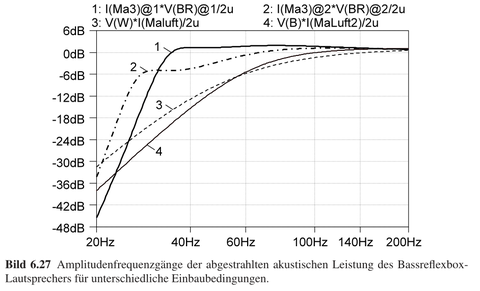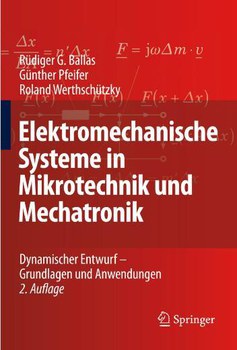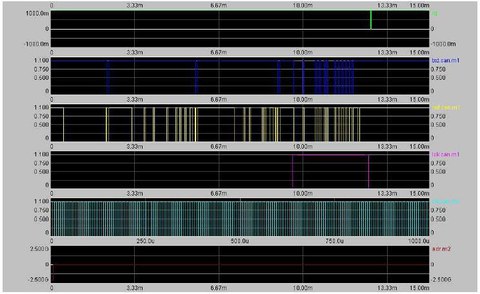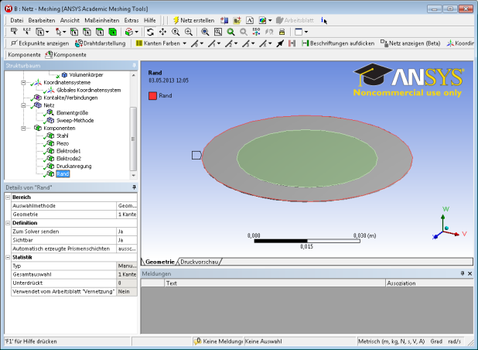Mikro-Elektro-Mechanischer Systeme (MEMS) 2020: Prof. Dr. Uwe Marschner (#UM2)
Format
synchron und asynchron (Vorlesung, Seminar+Konsultation, Praktikum)
Für den Kurs stehen ein Lehrbuch und ein Übungsbuch mit durchgerechneten Lösungen sowie lauffähige Simulationsfiles, z.B. für das frei verfügbare und schnell zu erlernende LTSPICE: Ausschwingresonanz eines Resonators, Vibrations-Drehratensensor, Piezoelekti-scher Signalgeber, Bassreflexbox, Stimmgabel, Chaosgenerator; ANSYS (über Remotedesk-topumgebung): Stimmgabel; VHDL-AMS (Heim-PC): Drucksensor mit CAN-Bus-Interface; Octave/Matlab (Heim-PC): Digitalfilter und weitere online zur Verfügung.
Schlagworte
-

© Uwe Marschner

© Uwe Marschner

© Uwe Marschner

© Uwe Marschner

© Uwe Marschner

© Uwe Marschner

© Uwe Marschner

© Uwe Marschner

© Uwe Marschner

© Uwe Marschner

© Uwe Marschner

© Uwe Marschner

© Uwe Marschner
Beschreibung
Besonderheiten der LV im Corona-Semester
Vorlesungen (Prof. Marschner): Aufgezeichnete Online-Vorlesungen + eingesprochene Powerpoint-Folien für die Vorlesung Elektromechanische Netzwerke
Übung (Dipl.-Ing. Petko Bakardjiev): Das Vorrechnen der Übungsaufgaben aus dem Übungs-buch und die Klärung von Fragen wurde aus dem Büro gestreamt und die Tafelmitschriften einfach über eine gedrehte Webcam, die auf ein Blatt A4 zeigt, umgesetzt. Da im Büro der Arbeitsrechner zur Verfügung steht, konnten die Beispiele nicht nur auf dem Blatt Papier gerechnet werden sondern auch die Simulationstool vorgeführt werden, welches die Mediale Abwechslung die Übung bereichert. Zu den Übungsaufgaben konnten zudem passende reale Forschungsbeispiele gezeigt werden, welches die Aktualität und Anwendbarkeit deutlich hervorhebt. Alle begleitenden Simulationen konnten (und sollten) mit Programmen auf den Heim-PC’s der Studierenden durchgeführt werden.
ANSYS-Simulationspraktikum (Dipl.-Ing. Philipp Mehner): In den letzten Jahren wurde das Praktikum im Rechnerpool des ZIH durchgeführt. Da dieser geschlossen war, hat das ZIH mehrere Server mit genügend Rechenleistung so verschaltet, dass ca. 30 parallel und hochausgerüstete Remotedesktops betrieben werden konnten. In nicht nur 3 Monaten wurde Hardware neu eingerichtet, aber auch Lizenzfragen und Zugangsfragen bis zum Homeoffice der Studenten gelöst. Das Praktikum ist online über einen Stream durchgeführt worden und die Studenten konnten parallel dazu auf dem eigenen Remotedesktop ihre eigenen Simulationsmodelle erstellen. Bei Fragen konnten diese ihren Desktop teilen und so individuell Probleme gelöst werden. Durch die Remotedesktopumgebung wurde das Selbststudium merklich gefördert, da sie zu jeder Tageszeit Zugriff auf einen gut eingerichteten Arbeitsplatz hatten. Die eingereichten Protokolle weisen einen sichtlichen Qualitätssprung in der Darstellung und Lösungsfin-dung der Ergebnisse auf. Ein Erhalt der Lösung nach Corona ist wünschenswert, da diese Variante, gerade in der Nachbereitung der Aufgaben, viele Freiheiten für die Studenten bietet.
Ziele des Kurses (aus OPAL): Die Studierenden verfügen nach Abschluss des Moduls über grundlegende methodische und praktische Kenntnisse zum effektiven Entwurf und zur anschaulichen Analyse des dynamischen Verhaltens von elektromechanischen und elektromagnetischen Systemen sowie zur Funktion und Modellierung umkehrbarer elektromechanischer Wandler in Sensoren und Aktoren. Sie kennen die Parameterbestimmung mit Finite-Elemente-Methoden und beherrschen die Methodik der Kombination der Verfahren mittels virtueller Schnittbauelemente. Die Studierenden sind in der Lage, die übersichtlichen und anschaulichen Analyseverfahren elektrischer Netzwerke anzuwenden, ein besseres physikalisches Verständnis zu entwickeln, physikalisch unterschiedliche Teilsysteme geschlossen zu entwerfen und mit vorhandener Entwurfssoftware, wie z. B. SPICE, zu simulieren.
Inhalte (aus OPAL): Modulinhalte sind die Beschreibung miteinander gekoppelter multiphysikalischer Teilsysteme in Form einer gemeinsamen schaltungstechnischen Darstellung und deren Verhaltenssimulation. Analysiert werden einfache mechanische, magnetische, fluidische (akustische), elektrische und gekoppelte Systeme einschließlich ihrer Wechselwirkungen. Komplexe Probleme der entwurfsbegleitenden Optimierung des dynamischen Verhaltens elektromechanischer Systeme können durch Kombination der Netzwerksimulation elektromechanischer Systeme mit dem Verfahren der Finite-Elemente-Modellierung gelöst werden.
Ansprechpartner
Prof. Dr.-Ing. habil. Uwe Marschner
Abstimmungskennung
#UM2













